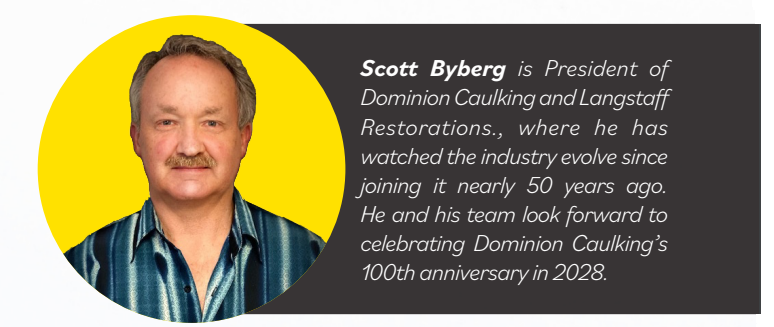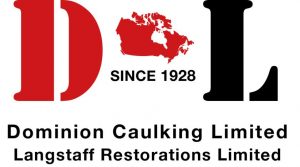In 2016, I wrote an article for a well-known property management company on what I believed the future held for the building restoration industry and its clients. It was my “best guess” after a 40- year career, and now, after the last six years, my concerns have only multiplied.
Six years ago, the future issues I predicted were on-site labour shortages, a major shift in overhead costs, and a trend of contractors not understanding the financial risks associated with the restoration Industry. All these issues have added dimensions in 2022, and they have all been amplified by the pandemic, surging inflation, fast-rising interest rates, and supply chain issues causing delays and unprecedented price hikes in all sectors.
 Back then, I also thought uneducated contractors would still be prevalent. Now, I am happy to report that most contractors now understand that the restoration industry is not for the “financial faint of heart.” However, for owners, property managers and condominium corporations, the days of getting a “cheap” price due to a financially uneducated contractor are over. During the pandemic, all companies focused on survival and were forced to be more attentive to finances. Due to the tightening of bonding and insurance requirements, banking facilities, and the rising complexity of the safety, labour, and tax laws, those companies had no choice but to get with the program as these issues have very real costs and have to be addressed in their pricing.
Back then, I also thought uneducated contractors would still be prevalent. Now, I am happy to report that most contractors now understand that the restoration industry is not for the “financial faint of heart.” However, for owners, property managers and condominium corporations, the days of getting a “cheap” price due to a financially uneducated contractor are over. During the pandemic, all companies focused on survival and were forced to be more attentive to finances. Due to the tightening of bonding and insurance requirements, banking facilities, and the rising complexity of the safety, labour, and tax laws, those companies had no choice but to get with the program as these issues have very real costs and have to be addressed in their pricing.
In 2016, it was also easy to predict that there would be a labour shortage. At the time, I thought the labour shortage in the future would be for “on-site” skilled labour, but now we’re seeing increased demand for employees needed off-site or in the office. Project management, accounting, estimating, HR, and all administration positions have competition like never before. In the past, employees could double up on responsibilities to run a company. Now, the expertise needed in each position makes it near impossible for these responsibilities to be completed by one person. As companies have more in-office employees, and are paying more for those employees due to competition, the cost of overhead surges.
This, again, adds to the overall costs of all projects. Of course, finding on-site skilled labour in construction is still an issue today. That said, it is exacerbated in the restoration industry by the fact that many people may be skilled workers, but
asking them to apply their skills on a swing stage 300 feet in the air is a non-starter for them. As a side note: 99 of 100 people who respond to a help wanted ad say “no” once they find out they will be working on the side of a building.
“Time to know,” no time to “think you know”
After 46 years (not 40) in the restoration industry, I’ll give those predictions another shot!
 For one, as we advance, I believe many people do not yet understand the speed and extent that costs are increasing and how it will affect contractors, owners, property managers and their clients. As front-end buyers, the restoration industry has seen increases in labour, materials, and supplies that are unprecedented. We have also seen what the result of competition has done to the labour pool, and why the supply chain issues are so costly. As a contractor, we have to adjust quickly to this reality and, at the same time, try to predict what all of this means to our future.
For one, as we advance, I believe many people do not yet understand the speed and extent that costs are increasing and how it will affect contractors, owners, property managers and their clients. As front-end buyers, the restoration industry has seen increases in labour, materials, and supplies that are unprecedented. We have also seen what the result of competition has done to the labour pool, and why the supply chain issues are so costly. As a contractor, we have to adjust quickly to this reality and, at the same time, try to predict what all of this means to our future.
No doubt, economic headwinds will continue to impact the industry. The condominium sector may be the area that needs the most focus, specifically at the Board of Directors level. Although keeping costs under control should be top of mind for everyone, there is a big difference between controlling everyday costs and reducing funding in a reserve fund to control costs. Controlling the daily, monthly, and yearly costs of a building is important and always top of the list since we see them constantly. Yet, in the past 20 years, with inflation at 2% or less and low-interest rates, reserve funds could be set up quite easily for future costs.
This isn’t the case anymore. Inflation isn’t around 2%; it’s 8% or more. And borrowing rates aren’t 2%; they’re triple. There are dramatic price increases for “out of sight, out of mind” services that are not seen by most people in the general public. Since mid2021, we have witnessed supplier price increases of 8, 10, 30, and 50% overnight. Even some reserve funds that appear well-funded for future projects are not keeping up with the reality of 2022. I fear that many condominium corporations don’t even realize they’re getting further and further behind the curve; and since major restoration projects happen infrequently, the realization will come too late.
My concern is not a guess. Some reserve fund studies I’ve seen recently are based on 2% or 3% increases. While this would suffice in the past, any corporation with a reserve based on these numbers or had their studies completed before 2022 should have those studies updated to present conditions. Moreover, their board should scrutinize the results thoroughly for their corporation’s long-term financial health.
As in 2016, my prediction is that many will ignore my advice and many will be fine. Even still, how much will it cost to take a good look? I predict – no, guarantee – the cost of being sure will be far less than being blindsided.











